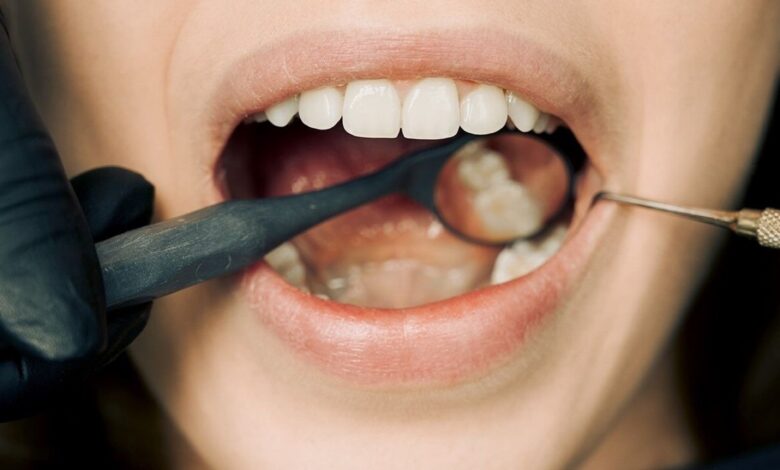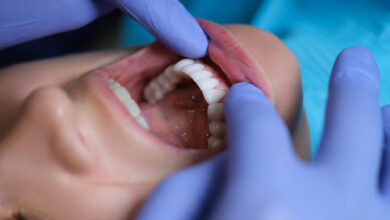Managing Calculus Bridge: Say Goodbye to Tooth Troubles

Are you tired of dealing with tooth trouble and the constant irritation caused by the Calculus bridge? Well, it’s time to say goodbye to those pesky dental issues once and for all! In this blog post, we will explore effective strategies for managing and preventing calculus bridges, ensuring a healthier and happier smile.
From practical tips to innovative solutions, get ready to bid farewell to tooth troubles and embrace a future of impeccable oral hygiene. Get ready to transform your dental routine with our expert advice – let’s dive in!
What is Calculus Bridge?
Calculus is a mathematics course used in many majors and disciplines. It is used to solve problems involving rates of change, derivatives, integrals, and limits. In calculus, these problems are often represented by graphs. Calculus can also be used to model real-world situations. For example, engineers may use calculus to analyze the motion of objects in space.
How does calculus form on teeth?
Tooth calculus bridges (or lines) are a common problem that dentists see in patients. Calculus bridges form when tiny pieces of calculus build up on the surface of teeth. Over time, these small deposits can create a line or bridge across the tooth’s surface.
Calculus bridges can be irritating and can cause pain when eating or chewing. They can also lead to tooth loss if not treated correctly. To avoid developing calculus bridges, it is important to maintain good oral hygiene habits and regularly visit your dentist for checkups. Additionally, you can use products like fluoride to prevent dental cavities from forming, which will help to remove any potential sources of calculus accumulation. If you do develop a calculus bridge, don’t panic – there are many ways to treat it safely and effectively.
What are the causes of calculus?
Tooth problems are one of the most common reasons students struggle with calculus. Calculus is a challenging course, and if your teeth aren’t in good condition, it can be difficult to keep up.
There are a few different types of calculus bridges that can develop:
1) Secondary calculus bridge occurs when the ridges on the back of your molars start to wear down. This can cause calculus to accumulate behind your teeth, which can lead to problems with balance and coordination. If you have secondary calculus bridges, you’ll need to get them repaired as soon as possible.
2) Primary calculus bridges form when small cavities form in your tooth enamel. These cavities can become filled with calculus and lead to problems with chewing and biting. If you have primary calculus bridges, you’ll need to see a dentist for treatment.
3) Dental Implants are another option for managing calculus bridges. Dental implants are a replacement for natural teeth that can provide long-term stability and peace of mind when it comes to tooth health. Implants are custom fitted by a dentist, so they’re perfect for patients who want long-term solutions for their dental problems.
How do you prevent calculus bridge from forming?
Tooth problems are a common occurrence in calculus, but there are ways to prevent them. One of the most common causes of calculus bridges is incorrect chewing habits. Chewing properly prevents calculus from forming because it breaks down the bonds between minerals in your teeth.
If you have trouble keeping your calculus bridges under control, make sure to brush and floss regularly and avoid tough foods and drinks. If you experience recurrent calculus bridges, see your dentist for professional help.
Benefits of Calculus Bridge
When you take calculus, you’ll need to learn how to use derivatives and integrals. These skills will help you understand how things change over time, and figure out solutions to problems. But calculus is more than just math. It also helps you think about problems logically.
One of the benefits of calculus is that it can improve your problem-solving skills. When you know how to integrate and differentiate, you can solve more complicated problems quickly. Plus, using derivatives and integrals teaches you how to explore different options until you find a solution that works well.
Calculus Bridge can also help improve your memory skills. As you learn these complex formulas, you’ll need to remember them long enough to apply them in a problem. Calculus Bridge helps by constantly testing your understanding with practice questions. This ensures that the information sticks in your memory, so you can solve problems faster in the future.
Conclusion
If you’re anything like me, calculus bridges are the bane of your existence. You struggle through them, but they always seem to come back to bite you in the ass. Well, no more! In this article, I’ll be teaching you how to manage and prevent calculus bridges so that you can finally put them behind you for good.
I hope that this information will help keep your calculus grades high and your smile bright! After that, you will learn the different techniques that you can use to prevent these pesky problems from happening again. Finally, I will give you some final tips on how to succeed in calculus!




